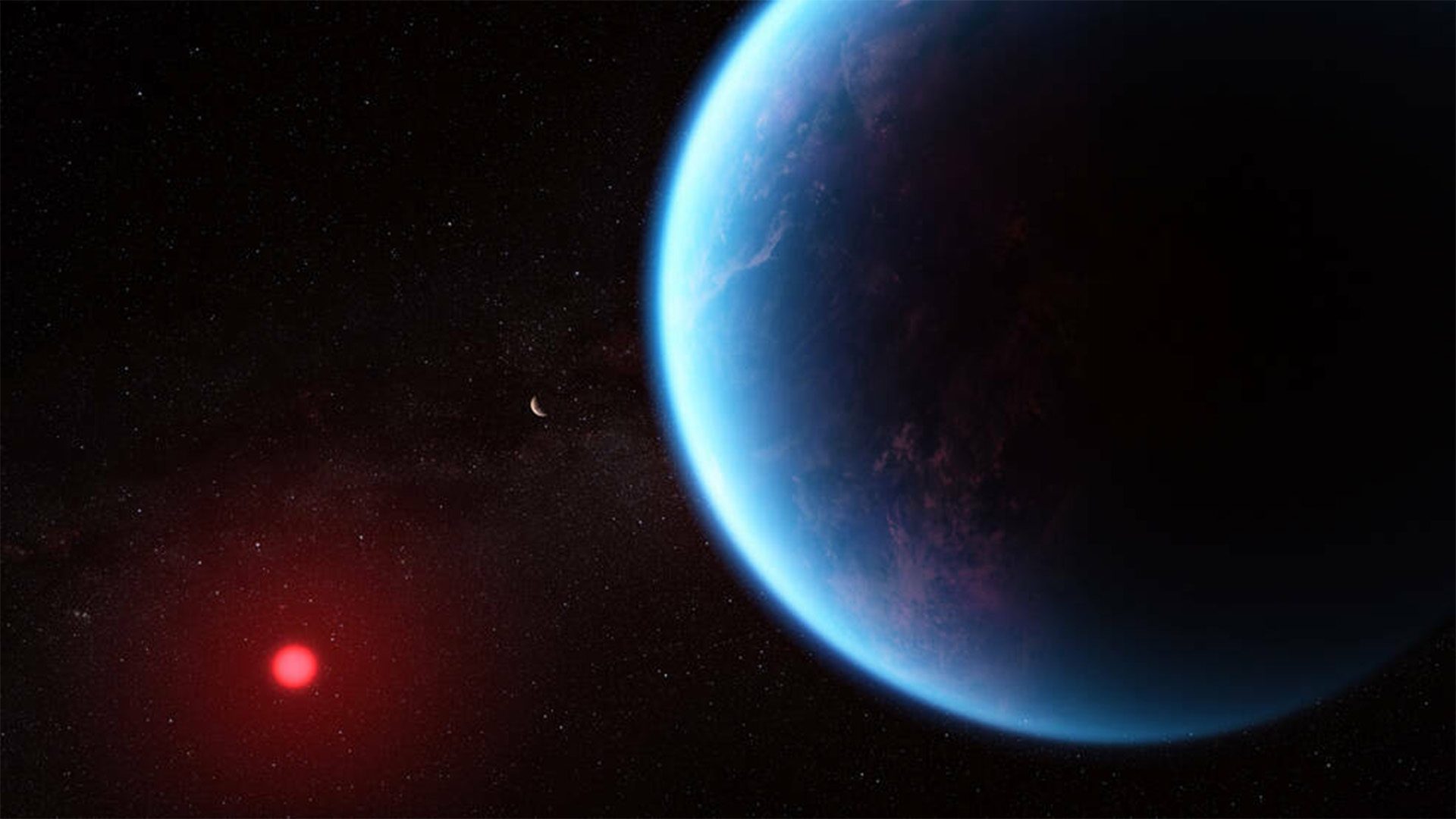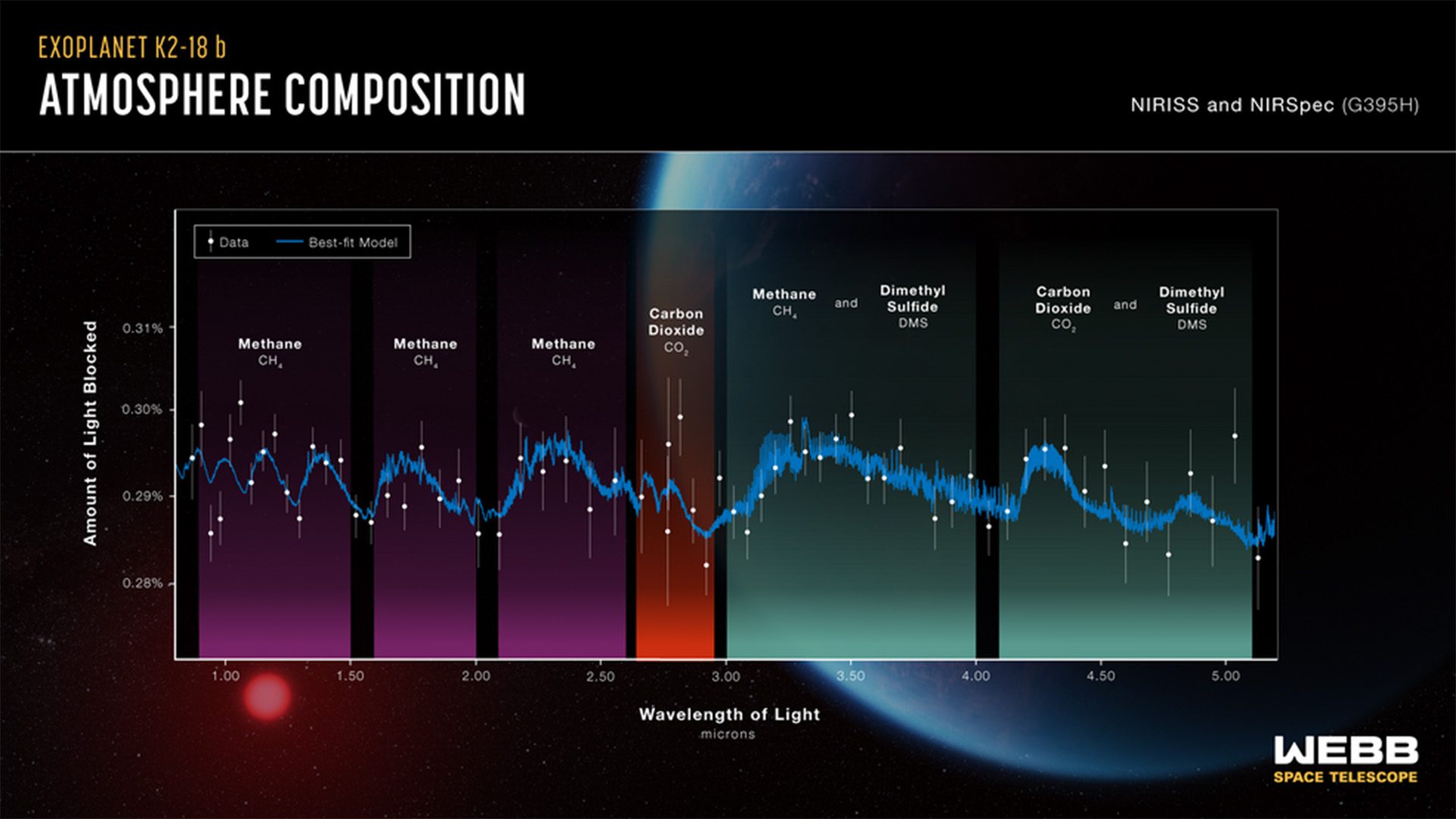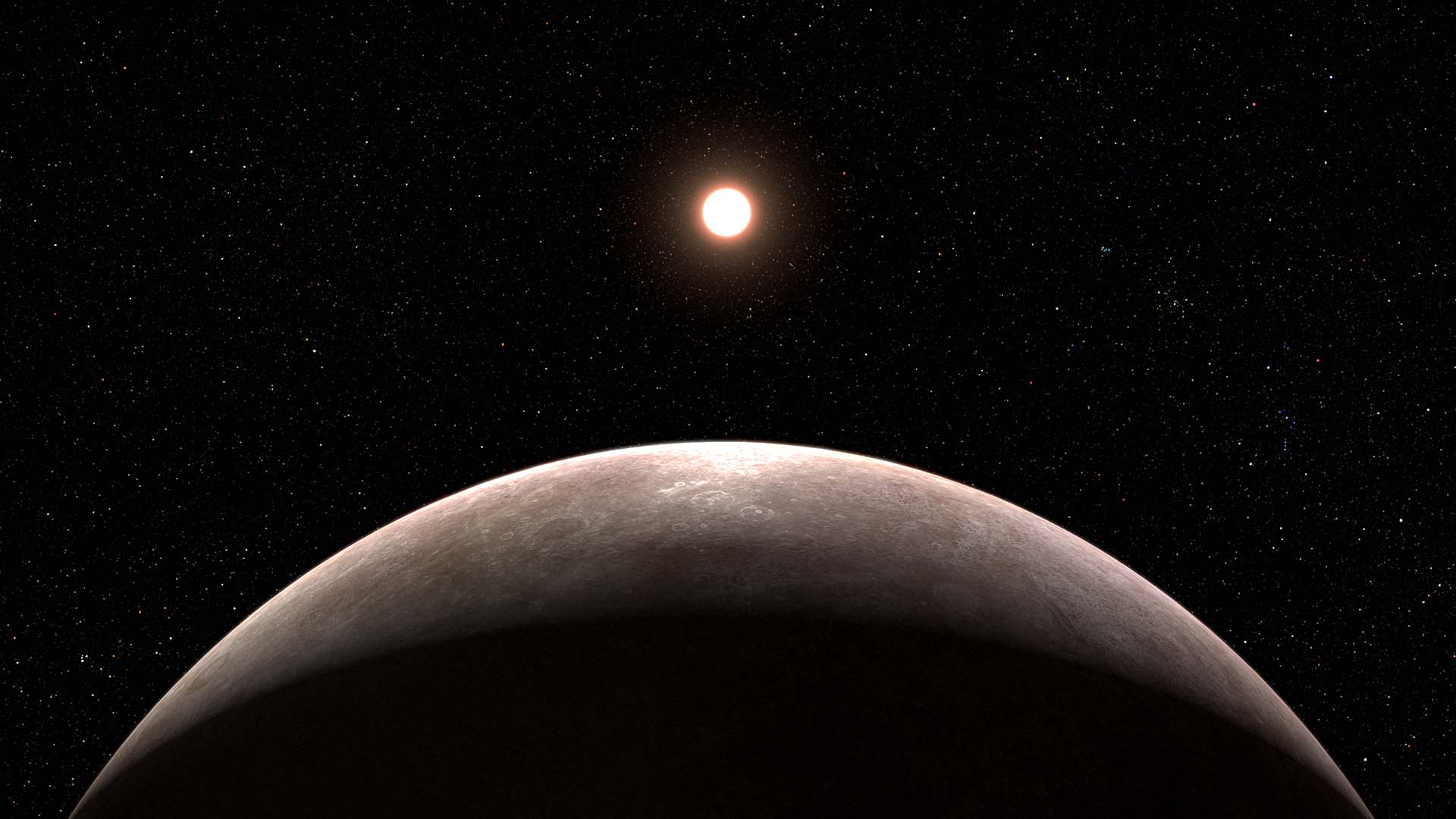Less than 120 light-years from Earth, water may be flowing on the surface of a large exoplanet according to new evidence from the James Webb Space Telescope.
A recent investigation using the space observatory revealed that the exoplanet K2-18 b may have some key features of a planet that could support bodies of water and possibly life as well. Orbiting the cool dwarf star K2-18, the exoplanet lies within the star’s habitable zone or “Goldilocks zone” and is 8.6 times larger than Earth.

Examining the planet with the James Webb Space Telescope revealed that its atmosphere is abundant in carbon dioxide and methane. According to a NASA news release, the presence of the carbon-bearing molecules and the scarcity of ammonia could indicate a hydrogen-rich atmosphere surrounding an ocean-covered world.
Evidence of water vapor in the exoplanet’s atmosphere was originally spotted by the Hubble Space Telescope in a 2019 study. The more advanced Webb telescope, which is capable of detecting infrared light invisible to the human eye, was able to search for what elements are present in the planet’s atmosphere.
The latest planetary observations also allude to the presence of a special molecule called dimethyl sulfide. According to NASA, on Earth dimethyl sulfide “is only produced by life. The bulk of the DMS in Earth’s atmosphere is emitted from phytoplankton in marine environments.”
“Our findings underscore the importance of considering diverse habitable environments in the search for life elsewhere,” explained Nikku Madhusudhan, an astronomer at the University of Cambridge and lead author of the paper announcing these results. “Traditionally, the search for life on exoplanets has focused primarily on smaller rocky planets, but the larger Hycean worlds are significantly more conducive to atmospheric observations.”
Though the current findings are promising, more research is needed to confirm whether the planet can indeed support life. For example, the planet’s large size means that its interior likely contains a large mantle of high-pressure ice similar to Neptune. Though Hycean worlds are predicted to have oceans of water, it may be possible that the ocean is too hot to be habitable.

The inference of DMS is less robust and requires further validation. “Upcoming Webb observations should be able to confirm if DMS is indeed present in the atmosphere of K2-18 b at significant levels,” explained Madhusudhan.
Characterizing the atmospheres of exoplanets is particularly difficult because these planets tend to be overshone by the glare of much larger planet stars, making it difficult to explore their atmospheres. The team in the new study overcame this challenge by analyzing the light from K2-18 b’s parent star as it passed through the exoplanet’s atmosphere.
K2-18 b is what is referred to as a transiting exoplanet, meaning that we can detect a drop in brightness as it passes across the face of its host star. During transits, a tiny fraction of starlight will pass through the exoplanet’s atmosphere before reaching telescopes like Webb. This passage leaves traces that astronomers can piece together to determine the gases in the exoplanet’s atmosphere.
“This result was only possible because of the extended wavelength range and unprecedented sensitivity of Webb, which enabled robust detection of spectral features with just two transits,” said Madhusudhan. “For comparison, one transit observation with Webb provided comparable precision to eight observations with Hubble conducted over a few years and in a relatively narrow wavelength range.”
The team’s results were published in The Astrophysical Journal Letters and they intend to conduct further research with the telescope’s MIRI (Mid-Infrared Instrument) spectrograph.
“Our ultimate goal is the identification of life on a habitable exoplanet, which would transform our understanding of our place in the universe,” concluded Madhusudhan. “Our findings are a promising step towards a deeper understanding of Hycean worlds in this quest.”







